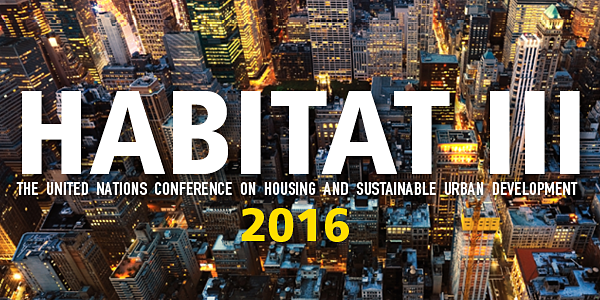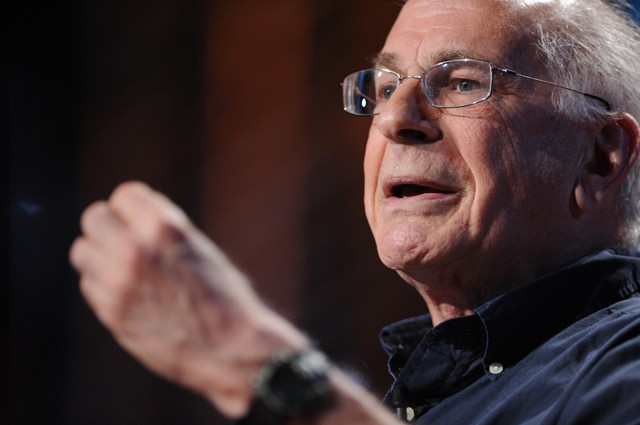Will Habitat III Really Update the Urban Agenda?


David Satterthwaite
“What would shake the world,” says David Satterthwaite about a major upcoming global housing conference this fall, “is if Habitat III produced a short, clear, simple, coherent set of guidelines for local governments and their interactions with their populations.”
In the latest issue of the journal Environment & Urbanization — which Satterthwaite edits with Sheridan Bartlett — a who’s-who of development experts look at the history of global development efforts, including the United Nations’ Sustainable Development Goals, in the lead-up to Habitat III. They offer direction for a genuinely useful outcome to that conference in Quito, Ecuador, even as they examine the failings of past efforts dating back to the 1960s. (“From Habitat II to Pachamama: a growing agenda and diminishing expectations for Habitat III,” an article by Michael A. Cohen, gives a taste of the offerings.)
This year is the 40th anniversary of the first United Nations Conference on Human Settlements – known as Habitat I – held in Vancouver, Canada and which resulted in the Vancouver Declaration. That document and its 64 goals included the statement that unchanged development patterns ultimately would mean that humankind would have to build “another world on top of the present one.”
Environment & Urbanization is a twice-yearly journal with a particular emphasis on Africa, Asia and Latin America, where most of world’s urban population now lives. It was founded in 1989 by the International Institute for Environment and Development (“Linking local priorities and global challenges”), a 45-year-old policy research organization with an eye toward practical outcomes and bottom-up solutions.
Satterthwaite is a senior fellow at IIED and its Human Settlements Group and has written extensively about urban and urban adaption to climate change (he was part of the Intergovernmental Panel on Climate Change team that won a Nobel Peace Prize in 2007). He is also a visiting professor at the Development Planning Unit at UCL. We asked him to detail the latest ‘New Urban Agenda’ and to offer some ideas of what we could – and what we should – see come out of Habitat III.
David, could you tell me a little bit about yourself? How did you get involved with the policy-focused International Institute for Environment and Development?
In 1974, IIED needed someone to help organize the library and bibliography for a new book that IIED’s president (Barbara Ward) was writing and I had six months free after graduating and before pursuing a masters. So I joined IIED on a temporary (six month) contract. I so enjoyed working with Barbara Ward that when the six months elapsed, I accepted her invitation to become her research assistant for this book (The Home of Man) and I have been at IIED ever since (although taking time off for doing a doctorate).
Would you explain the origin of the idea of a ‘new urban agenda’—whether under that name or not – and perhaps sketch out its history in practice? Your editorial in Environment & Urbanization cites examples back the 1960s, and even Habitat II, the Second United Nations Conference on Human Settlements, is now 20 years old.
Discussions within the United Nations (and especially in preparations for Habitat III, the UN Conference on Housing and Sustainable Urban Development to be held in October 2016) refer to ‘The New Urban Agenda.’ But no-one is sure what this actually is. Given the very poor housing and living conditions and lack of basic services suffered by so much of the urban population in low- and middle-income countries, there is a very serious need for new approaches. Now that the UN has endorsed the Sustainable Development Goals, new agendas are needed to address these – in rural and urban areas – and also ensure no-one is left behind. “The New Urban Agenda” is being drafted by representatives of national governments that are UN members, but there is no guarantee that it will be new or coherent as an agenda. Habitat II in 1996 produced a very long (110 page) ‘Habitat Agenda’ that certainly was not new and was not a practical agenda. What Habitat III should be producing is a coherent set of principles or guidelines that city (and other local) governments can implement to meet the Sustainable Development Goals.
 There are moments in the last 50 years when new urban agendas did emerge and influenced the way that (some) national and (many) city and municipal governments worked, as elaborated in the editorial of the special issue of Environment and Urbanization (Vol 28, No 1, April 2016) that is on “From the MDGs to the SDGs and Habitat III.”
There are moments in the last 50 years when new urban agendas did emerge and influenced the way that (some) national and (many) city and municipal governments worked, as elaborated in the editorial of the special issue of Environment and Urbanization (Vol 28, No 1, April 2016) that is on “From the MDGs to the SDGs and Habitat III.”
How successful have these attempts been? What lessons can we learn for crafting and implementing future urban agendas – especially now that Habitat III is in the offing?
To draw from the editorial, the Healthy Cities Movement, Local Agenda 21, Participatory Budgeting and Make My City Resilient all presented new urban agendas. Each included clear, simple and relevant guidelines for urban governments that got buy-in from thousands of such governments around the world. Their success was due in part to their encouragement of do-able local actions, in part because what they addressed were local issues that were also supported by much of the electorate. The recognition by governments that informal settlements are part of the solution (and from this support for upgrading) could be seen as a new agenda – and it was stimulated by John FC Turner and others in the 1960s.
How important are global initiatives like the Habitat conferences or things like the Sustainable Development Goals? Do they achieve anything, whether at the state level or on the ground? What would you like to see happen in Quito this fall?
The Sustainable Development Goals were much better and more comprehensive than the Millennium Development Goals that they replace. They are amazingly ambitious – and perhaps their greatest weakness is the lack of attention to how their ambitions will be met, by whom, with what support. Local governments and local civil society (both crucial for meeting most of the SDGs) are hardly mentioned.
What would shake the world is if Habitat III produced a short, clear, simple, coherent set of guidelines for local governments and their interactions with their populations (including grassroots organizations representing those whose needs have not been met). That local governments could buy into and will commit to – and commit to regular reports on progress to the United Nations.
I don’t mean to make innovation and impact seem zero-sum, but does real progress bubble up from the bottom, from cities and metro areas or perhaps even from citizens, and not from the top down?
Almost all urban innovation is local – grass roots organizations, other civil society groups, local governments (often working together). This is where we have powerful examples of cities doing well on the SDGs. But these are the outliers. It is down to national governments and international agencies to learn how to support locally rooted innovation everywhere and this implies major changes in funding structures and in increasing the capacities and revenue bases of local governments.

































































































